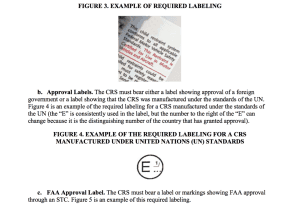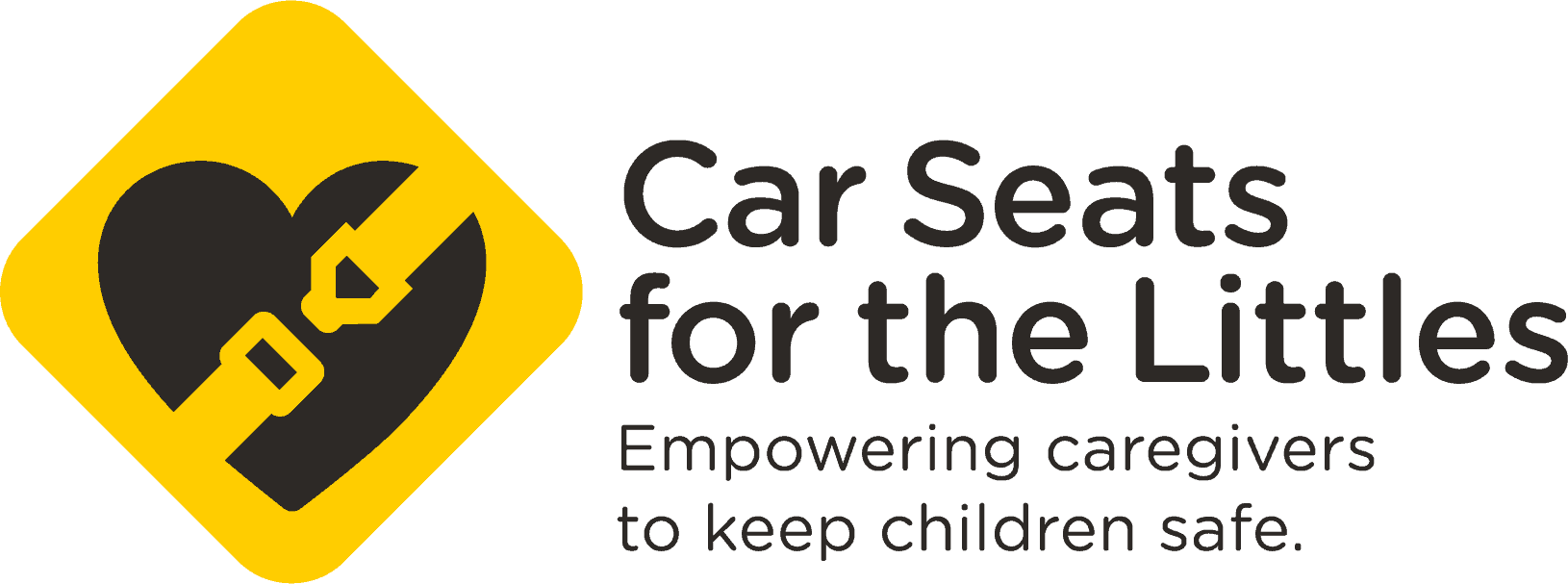Now that you’ve read Leaving on a Jet Plane and On the Road Again you’re all prepped for air travel with your Littles. But you’ve heard horror stories from other travelers who have said the flight attendants didn’t let them use their seats, or told them their infant must forward face, or something similar. You want to be prepared for your trip. What documents do you need in order to fly with your child’s car seat? Which parts of those documents are relevant?
Travel within the United States
The two primary documents that cover airlines in the United States are from the FAA:
- FAA Advisory Circular: Use of Child Restraint Systems on Aircraft (referred to after this as 120_87c) is the full Advisory Circular, dated 9/24/15. It covers everything about traveling with children on board.
- FAA Regulatory Requirements Regarding Accommodation of Child Restraint Systems (referred to after this as 15013), dated 9/27/15. It is basically a summary of the full advisory, but it doesn’t cover types of seats, two children traveling next to one another, or other parts.
- The third part of what to have when preparing is the airline’s own website if they have any policies posted there. This is the parents’ portal, what they will see and the ONLY thing they can see about the airline and car seat usage. We cannot read the manual for each airline. This is not a legally binding contract, but it’s helpful to show a flight attendant sometimes what their own company expects or allows parents. Not all airlines have a statement online, but many do.
Here are links to a few popular U.S. airlines’s statements on car seats on the aircraft:
Southwest Airlines
Travel within Canada
It’s a smaller document than the FAA’s, but it covers the same general topics. This document is where you will find that your U.S. aircraft approved seat is allowed to be used on flights in Canada.
Key Portions of FAA Documents
Going back to the US FAA’s document for the remainder of this article, here are the parts of the FAA documents that caregivers may want to highlight or be aware of before flying.
1. “Is my child’s car seat approved for use on the airplane? What if the flight staff say I can’t use it?”
120-87c: Section #10D
Regulations. Under the provisions in parts 121, 125, and 135, no certificate holder may prohibit a child from using an approved CRS when the parent/guardian purchases a ticket for the child. Certificate holders are encouraged to allow the use of empty seats to accommodate CRS; however, they are not required to allow non-ticketed children to occupy empty passenger seats, even if the child uses a CRS.
Section #10F
f. Operators Prohibiting CRS Use. No aircraft operator may prohibit a child from using an approved CRS when the parent/guardian purchases a seat for the child. If an approved CRS, for which a ticket has been purchased, does not fit in a particular seat on the aircraft, the aircraft operator has the responsibility to accommodate the CRS in another seat in the same class of service. The regulations also permit an aircraft operator to use its discretion in identifying the most appropriate forward-facing passenger seat location, considering safe operating practices.
15013:
Discussion: Per §§ 121.311 (b)(2)(i), 125.211(b)(2)(i), 135.128(a)(2)(i), no operator may prohibit a child (an individual who has not reached his or her 18th birthday) from using an approved CRS when a seat is purchased for the child, the child is accompanied by a parent or guardian and the child is within the weight limits for the CRS. If an approved CRS, for which a ticket has been purchased, does not fit in a particular seat on the aircraft, it is the responsibility of the aircraft operator to accommodate the CRS in another seat in the same class of service. The following are examples of design variations where accommodation is required.
2. “I’m not American but my child’s car seat is aircraft approved. Can I use it on board?”
120_87c: Section #9B
Approval Labels. The CRS must bear either a label showing approval of a foreign government or a label showing that the CRS was manufactured under the standards of the UN. Figure 4 is an example of the required labeling for a CRS manufactured under the standards of the UN (the “E” is consistently used in the label, but the number to the right of the “E” can change because it is the distinguishing number of the country that has granted approval).
3. “I’d like my 18 month old to be rear facing, but the airline staff wants me to install the seat forward facing. What are my options?” This question is not as clear cut as some of the others, but if your child is within the weight limits to ride rear facing, they can use the seat according to the FAA. In addition to #10D and #10F above, 120_87c Section #10B:
b. Proper Use of CRS. If a child occupies a CRS, a parent/guardian must accompany the child, and the aircraft operator must comply with the requirements that the child is properly secured in the CRS, the CRS is properly secured in a forward-facing seat, the child does not exceed the weight limits of the CRS, and the CRS is approved and has the proper labels or markings.
In addition, international carriers may not allow rear facing seats and that is within their right. If you are traveling internationally, check before you book tickets. Please read our article on traveling internationally for more information.
4. “My child’s car seat doesn’t fit on board, what do I do?!”
120_87c: Sections #10F(1) and #10F(2)
(1) A CRS with a base that is too wide to fit properly in a seat with rigid armrests can be moved to a seat with moveable armrests that can be raised to accommodate the CRS in the same class of service.
(2) An aft-facing CRS that cannot be installed properly, because of minimal pitch (distance between seats) between rows, can be moved to a bulkhead seat or a seat in a row with additional pitch in the same class of service.
15013: First page, 1, 2, and 4
1) A CRS with a base that is too wide to fit properly in a seat with rigid armrests can be moved to a seat with moveable armrests that can be raised to accommodate the CRS in the same class of service.
2) An aft-facing CRS that cannot be installed properly because of minimal pitch (distance between seats) between rows can be moved to a bulkhead seat or a seat in a row with additional pitch in the same class of service.
4) There are some aft-facing CRS that have a detachable base that may keep the CRS from fitting properly in the seat. The following visual cues will assist the passenger and the aircraft operator to determine if the detachable base is necessary.
5. “I’m traveling with two children, both of whom are in car seats, do they both have to be in window seats?”
120_87c: Section #20
20. TRAVELING WITH MORE THAN ONE CHILD. In the event a parent/guardian is traveling with more than one child in a CRS or is traveling with several small children, only one of whom is occupying a CRS, good judgment should be used regarding placement of the CRS. As long as these conditions below are met, the CRS could be placed in a seat other than a window seat. At a minimum:
The CRS should be placed so it does not block any passenger’s (including the parent’s/guardian’s) egress to the aisle used to evacuate the aircraft and
The CRS should be placed so the parent/guardian can reach the child in the CRS to release and evacuate with the child, should an emergency evacuation be necessary.
Hopefully this helps parents who are interested in traveling safely with their Littles, and help them navigate the pages and pages of official documents from the FAA and airline websites.
